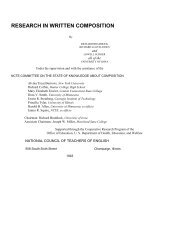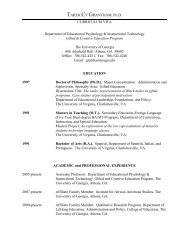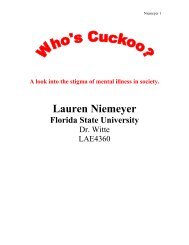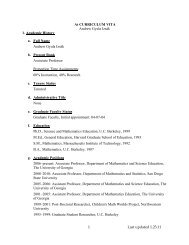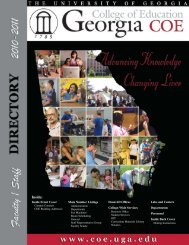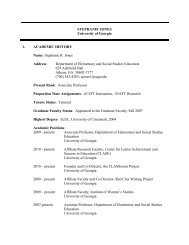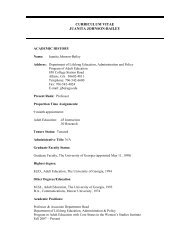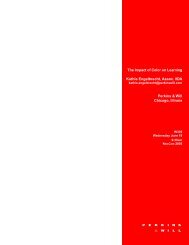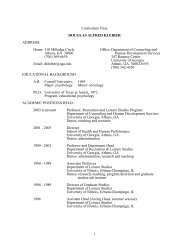Frenemies: Relationships in Othello - College of Education
Frenemies: Relationships in Othello - College of Education
Frenemies: Relationships in Othello - College of Education
Create successful ePaper yourself
Turn your PDF publications into a flip-book with our unique Google optimized e-Paper software.
• W.9-10.2. Write <strong>in</strong>formative/explanatory texts to exam<strong>in</strong>e and convey complex ideas,<br />
concepts, and <strong>in</strong>formation clearly and accurately through the effective selection,<br />
organization, and analysis <strong>of</strong> content.<br />
◦ Introduce a topic; organize complex ideas, concepts, and <strong>in</strong>formation to make<br />
important connections and dist<strong>in</strong>ctions; <strong>in</strong>clude formatt<strong>in</strong>g (e.g., head<strong>in</strong>gs),<br />
graphics (e.g., figures, tables), and multimedia when useful to aid<strong>in</strong>g<br />
comprehension.<br />
◦ Develop the topic with well-chosen, relevant, and sufficient facts, extended<br />
def<strong>in</strong>itions, concrete details, quotations, or other <strong>in</strong>formation and examples<br />
appropriate to the audience’s knowledge <strong>of</strong> the topic.<br />
◦ Use appropriate and varied transitions to l<strong>in</strong>k the major sections <strong>of</strong> the text,<br />
create cohesion, and clarify the relationships among complex ideas and<br />
concepts.<br />
◦ Use precise language and doma<strong>in</strong>-specific vocabulary to manage the complexity<br />
<strong>of</strong> the topic.<br />
◦ Establish and ma<strong>in</strong>ta<strong>in</strong> a formal style and objective tone while attend<strong>in</strong>g to the<br />
norms and conventions <strong>of</strong> the discipl<strong>in</strong>e <strong>in</strong> which they are writ<strong>in</strong>g.<br />
◦ Provide a conclud<strong>in</strong>g statement or section that follows from and supports the<br />
<strong>in</strong>formation or explanation presented (e.g., articulat<strong>in</strong>g implications or the<br />
significance <strong>of</strong> the topic).<br />
Comprehension and Collaboration<br />
• SL.9-10.1. Initiate and participate effectively <strong>in</strong> a range <strong>of</strong> collaborative discussions<br />
(one-on-one, <strong>in</strong> groups, and teacher-led) with diverse partners on grades 9–10 topics,<br />
texts, and issues, build<strong>in</strong>g on others’ ideas and express<strong>in</strong>g their own clearly and<br />
persuasively.<br />
◦ Come to discussions prepared, hav<strong>in</strong>g read and researched material under<br />
study; explicitly draw on that preparation by referr<strong>in</strong>g to evidence from texts and<br />
other research on the topic or issue to stimulate a thoughtful, well-reasoned<br />
exchange <strong>of</strong> ideas.<br />
◦ Work with peers to set rules for collegial discussions and decision-mak<strong>in</strong>g (e.g.,<br />
<strong>in</strong>formal consensus, tak<strong>in</strong>g votes on key issues, presentation <strong>of</strong> alternate views),<br />
clear goals and deadl<strong>in</strong>es, and <strong>in</strong>dividual roles as needed.<br />
◦ Propel conversations by pos<strong>in</strong>g and respond<strong>in</strong>g to questions that relate the<br />
current discussion to broader themes or larger ideas; actively <strong>in</strong>corporate others<br />
<strong>in</strong>to the discussion; and clarify, verify, or challenge ideas and conclusions.<br />
◦ Respond thoughtfully to diverse perspectives, summarize po<strong>in</strong>ts <strong>of</strong> agreement<br />
and disagreement, and, when warranted, qualify or justify their own views and<br />
6



